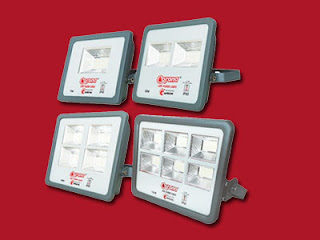How to select the most suitable energy-saving LED bulbs to your house in five simple steps
Lighting doesn't just revolve around energy efficiency. It is important to create the perfect atmosphere in different areas of your home isn't it? Perhaps you'd like a cozy reading space, a vintage lounge, or perhaps a more contemporary kitchen.
This
can be accomplished by using the right lighting to highlight your furniture. If
you are able to achieve that while conserving the
environment or
money as well as reducing the carbon footprint and carbon
footprint, then you're on the right track!
There
are many bulbs available currently available each designed to perform somewhat
different things. It can be difficult to navigate - hence this helpful
guide to light your way.
To
ensure that you are getting the most efficient light bulbs for the home you
live in, think about your room, and be mindful of these easy steps to follow:
- Fixing:
Check the fitting of your LED bulb on the light fixture and record the
code.
- Shape:
choose what you would like the lighting to appear either omnidirectional
or directional (more about this later) Also, check out our illustration
for the best bulb shape. Ask for help when you shop.
- Temperature:
Are you lighting a cozy space, with a warm, cozy feel, or a modern, light
minimalist space? Look at the Kelvin scale aboveto determine what
bulb's temperature will best fit your.
- Cost: It's
a good idea to shop for the best price. High-quality LEDs are
available at reasonable prices.
Click
here to find more information:
1. Which bulb type is required?
There
are several kinds of fittings available in the UK that include:
- Different
sizes of bayonets (twist and base lock)
- A variety
of types of Edison screw caps.
- Many
dimensions of push are designed to
Check
the bulb you own before you shop. Ideally, bring the bulb along to ensure
your safety.
2. What bulb shape will you require?
Different
shapes of bulbs emit different types in light. They can be
classified into two categories: either omnidirectional or directional. For
instance the typical light hanging off an overhead light (called"a
"pendant light) requires a LED bulb
that spreads light across the entire space. That's omnidirectional.
It
is recommended to purchase an unspecified, stick, or spiral bulb to create an
the omnidirectional light. Lamps are, however typically utilize candles,
whereas an arc bulb would be ideal to use for the spotlight.
3. How bright is it required to be?
When
we were using LED bulbs made of incandescent, it was ok to judge brightness by
the measure of power - in watts. Today, with LEDs and CFLs that are so
efficient in energy use that less power is required to achieve similar
brightness. Instead of watts, the brightness measurement is in
"lumens".
The
table below provides equivalents for the different kinds of energy-saving bulbs
, compared to regular bulbs. The brightness is the highest and expressed
in lumens. Below, you will look at the different bulbs, and the brightness
they have in comparison.
For
instance, to achieve the similar brightness of a standard 60w bulb, you'd
require 700 lumens. If you replace that 60w bulb with an LED bulb means you'll need to purchase
the 10w LED bulb. This shows how energy-efficient LED bulbs are. In
essence, six more times the power required to achieve identical brightness!
4. What is the temperature you would like your light
source to appear?
Did
you remember when LEDs first appeared on the market? They emitted a pure,
white light, much less warm than the warm orange glow we are familiar with from
incandescents. The light was soon replaced and LEDs are now accessible in
a variety of temperatures and colours.
When
you are looking to find LED bulbmanufacturers or purchase a fresh bulb have to determine the
"warm" you'd prefer your light to be so that you don't make any
mistakes that could cause glare!
It
is the temperature measured by light as "kelvin". Warm light
that is orange as the light of a candle is approximately 1500k. Bright
daylight is cooler approximately 5500k. Here's a scale of Kelvin, to give
you a better concept:
Our
brains are wired to be in a certain way, which is why the most commonly used
bulbs for homes is one that is the "warm white" of the incandescent
bulb (2700k). However, in bathrooms and kitchens most people would prefer
a less yellow light that is known as "natural white" (3000k).
equivalent
incandescent. With time, the costs have decreased and are now just a
choice for contemporary, minimalist homes, a more cool white (4000k) could be a
good choice. Be aware that any color above 5000k will appear blue in
color.
5. What amount will you need to pay?
When
LEDs first appeared on the market in the early 1990s, they were ten percent
more costly than incandescent. which makes them very cost-effective since they last
longer and consume less energy. When you invest in a LED that will last
for years and consume a tiny only a fraction of the energy used by an
incandescent bulb, is a wise investment!
An
article published on The Guardian explains
how the cost of lighting could be reduced by nearly 90% by simply making the
switch to LEDs. When every Indian home converted on LED Bulb we would cut down on around eight million tons of carbon
emission to the air. In actuality what energy is saved during peak times
could be equivalent to the output of three power stations. This is a truly
lightbulb moment!


Comments
Post a Comment